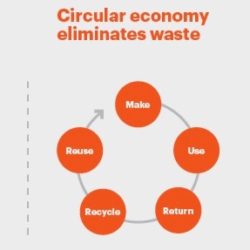Gartner: Antifragile supply chains achieve growth even during uncertain periods

Is it possible to achieve revenue gains in uncertain times? Only 9% of supply chain organizations expect to do so. According to a new survey by analyst firm Gartner, however, companies that succeed in creating an antifragile supply chain not only survive, but also benefit from uncertainty.
By Henrieke Wagenvoort
In a survey conducted among 164 supply chain professionals in June of this year, Gartner assessed how supply chains deal with uncertainty. Whereas 9% of supply chain organizations believe revenue growth is still possible, 28% expect no change in revenue, while 63% of respondents anticipated a loss of revenue because of exposure to uncertainty.
According to Gartner, antifragility – the ability to turn disorder into opportunities, possibilities and growth – can transform supply chain performance in uncertain times and supports a growth agenda. When viewed from that perspective, antifragility provides the ability to gain because of exposure to uncertainty – and the bigger the exposure to uncertainty, the greater the opportunity for gain.
Mindset
“An antifragile supply chain starts with the Chief Supply Chain Officer’s mindset,” said Tim Payne, Vice President Analyst at Gartner. “Rather than trying to keep uncertainty out of the supply chain, antifragile supply chains embrace uncertainty with the objective of learning, evolving and adapting their capabilities based on their improved knowledge of it.”
Gartner’s analysis identified a select group of antifragile capabilities that CSCOs can deploy when faced with uncertainty. This makes them 2.1 to 4.9 times more likely to gain revenue for their organizations in uncertain times.
“The inability to cope with uncertainty is driven by a misallocation of initiatives to the wrong strategy,” Payne added. “Nearly half of the respondents said that more than 50% of their supply chains’ key capabilities are set up to attempt to keep uncertainty outside the supply chain. This overinvestment in a barrier to keep uncertainty out actually stifles the ability to learn from it, keeping most supply chains today in a fragile state.”
Coping with uncertainty
Gartner advises CSCOs to assess their current ability to deal with uncertainty so that they can apply appropriate strategies to evolve towards an antifragile supply chain state. While resilient supply chains may not suffer losses during periods of uncertainty, the focus remains on keeping most uncertainty out. This often reduces an organization’s ability to learn from it and leads to ‘resiliency fatigue’.
“In contrast, an antifragile mindset changes how CSCOs approach and shape their capabilities, including in areas such as integrated planning, ROI calculations, supply chain redundancy and assessing uncertainty,” Payne continued. “Our research shows that a select group of antifragile capabilities are especially effective in moving a supply chain into the antifragile state.”
Top 6 antifragile capabilities
Based on the survey results, Gartner has identified the top six antifragile capabilities for driving a supply chain towards gains during uncertainty. The most impactful supply chains capabilities are:
- Decision processes and collaboration: enabling dynamic decision processes during uncertainty (4.9x more likely to have a positive revenue impact)
- Calculating ROI for supply chain investments: assessing the value of investing at different times due to uncertainty (4.5x).
- Managing the assessment of uncertainty: performing a high degree of experimentation on the supply chain to stress-test it (3.7x).
- Supply chain redundancy: viewing redundancy (e.g. inventory, capacity, multiple suppliers) as an investment opportunity (3.6x).
- Supply chain planning: a focus on end-to-end planning policies (probabilities, options, thresholds) in the midterm and accurate functional short-term planning (2.5x).
- Monitoring, adjustments and responsiveness: monitoring ‘at arm’s length’ to intervene only if policies are breached and empower local stakeholders to adjust within policies (2.1x).










